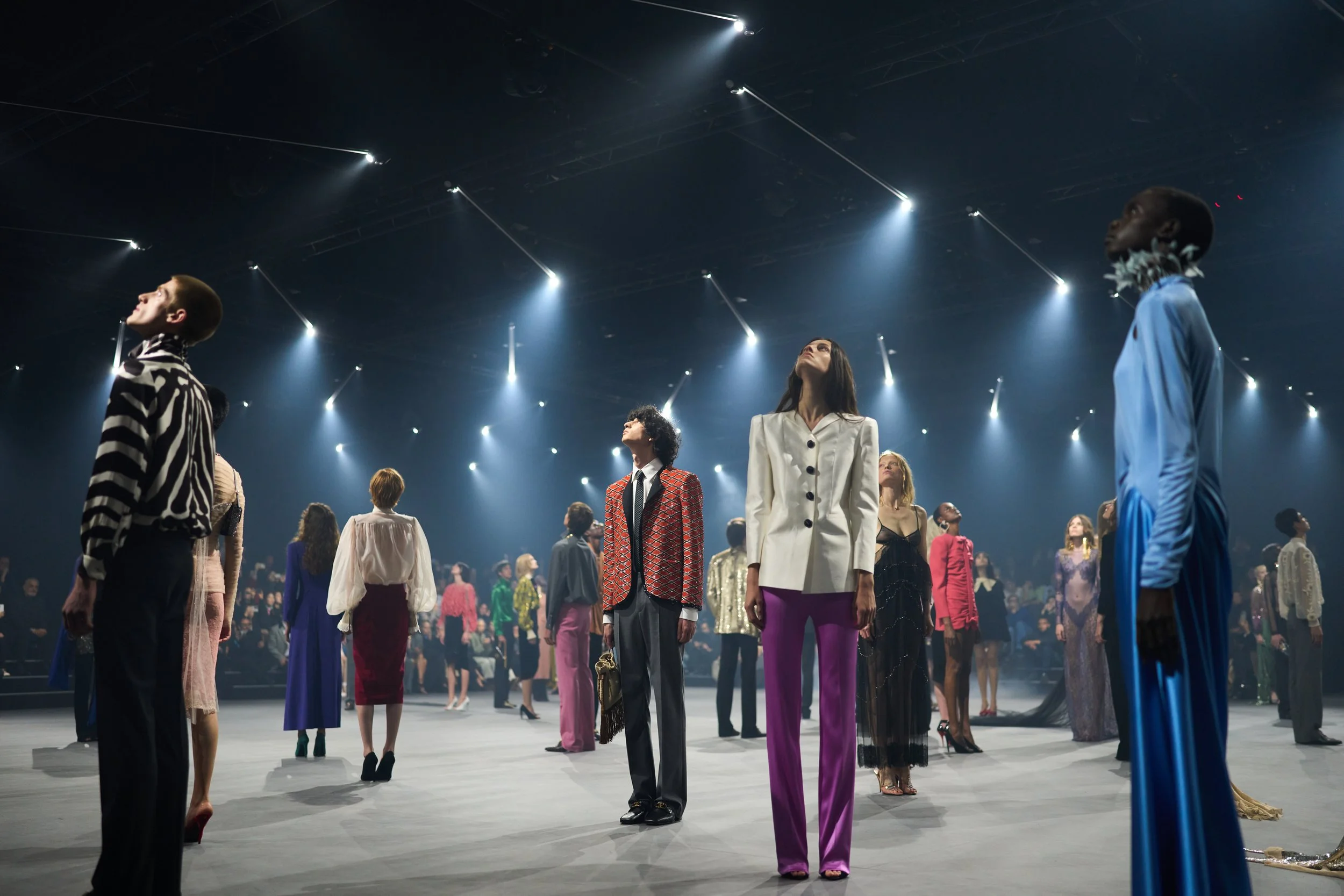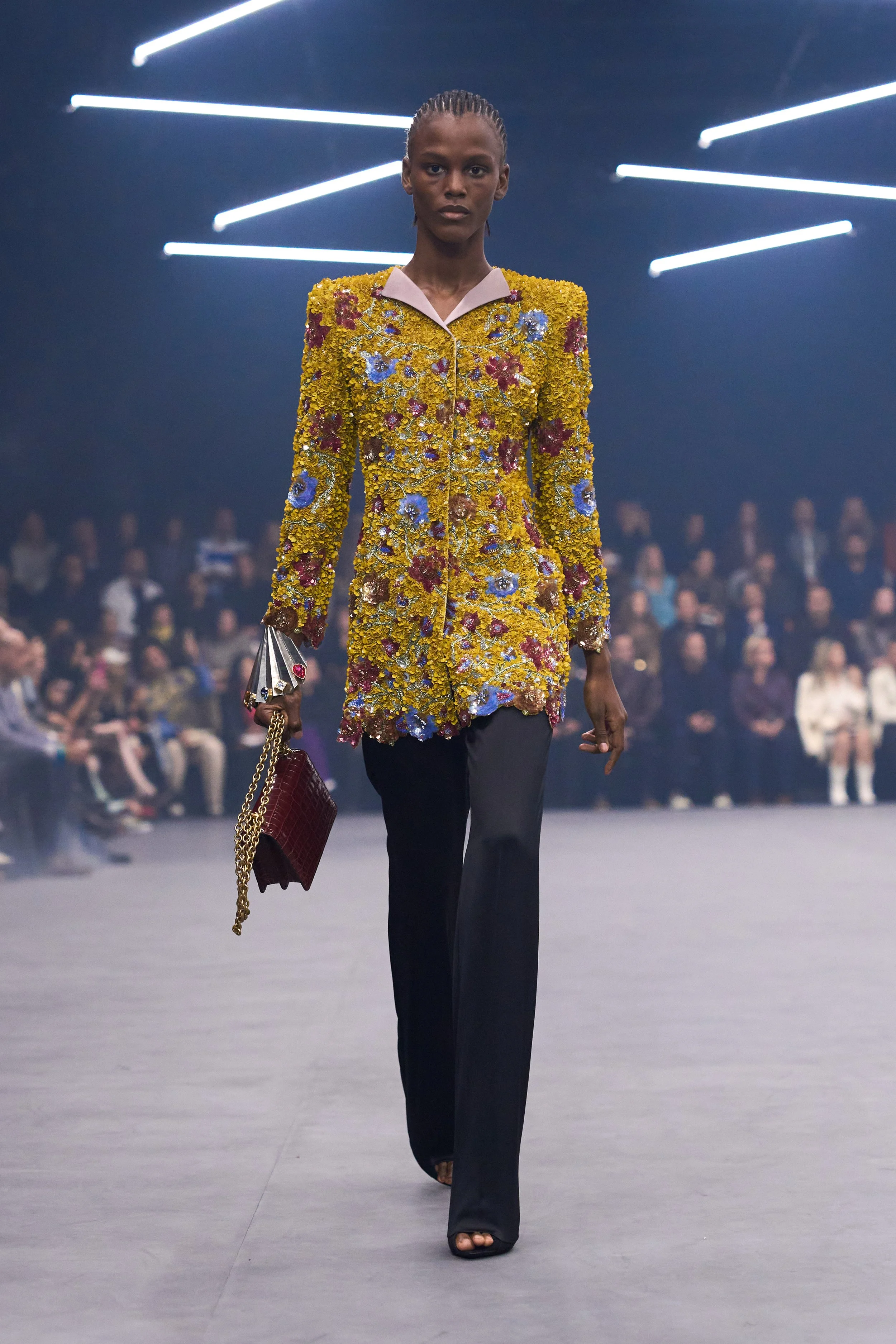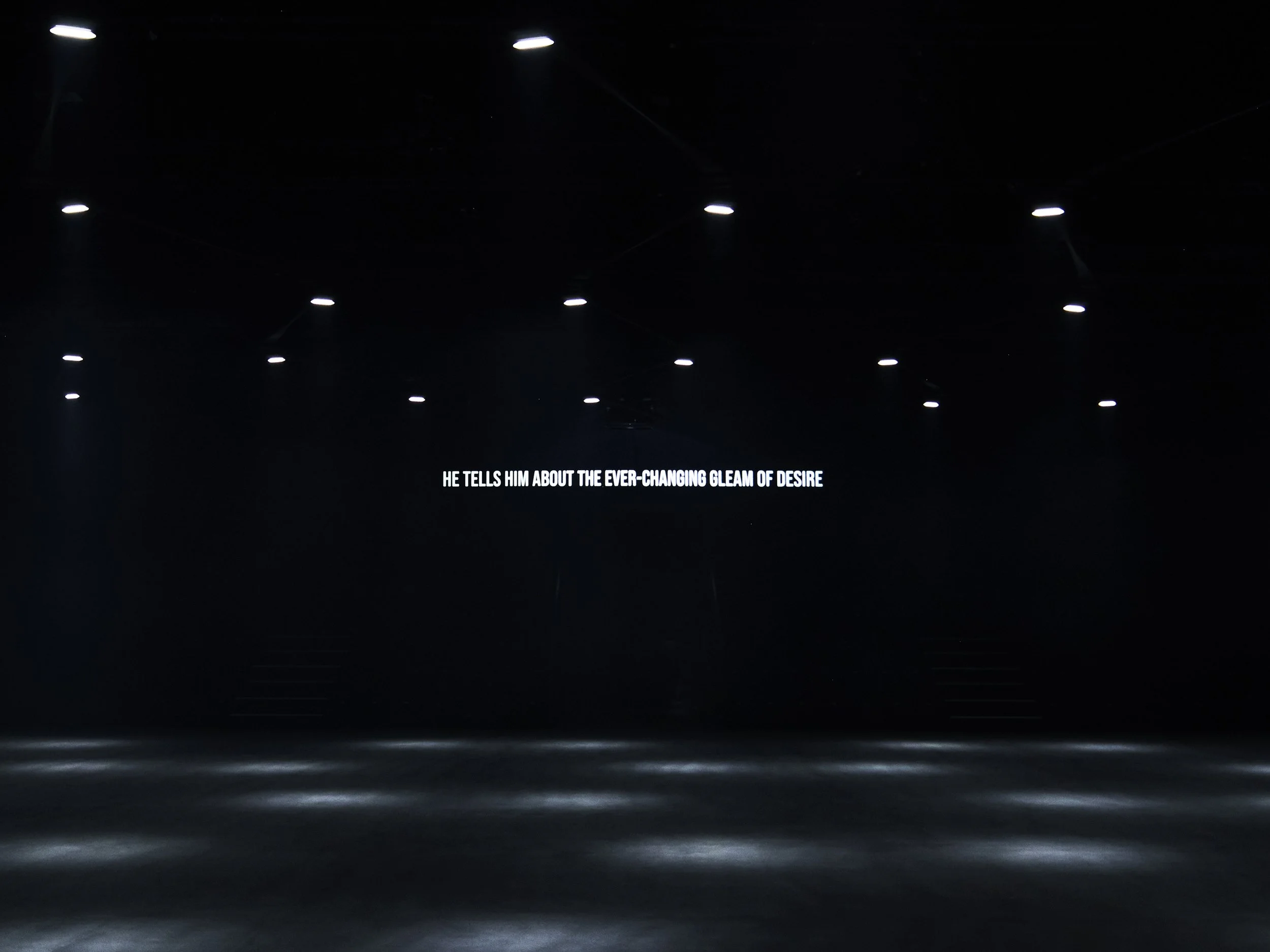Valentino SS26: Fireflies and the Politics of Perception
Alessandro Michele’s Look 11 for Valentino Spring Summer 2026
Valentino SS26: Fireflies and the Politics of Perception
At Valentino’s Spring/Summer 2026 show in Paris, the lights went out before they came up. Pamela Anderson’s voice filled the Arab World Institute, reading a 1941 letter by Pier Paolo Pasolini, a young poet describing fireflies as fragile but luminous acts of resistance in an era of fascist darkness. That letter became the conceptual nucleus of Alessandro Michele’s second collection for the house: Fireflies.
Pasolini’s metaphor, revived decades later, feels almost prophetic in 2025. His “disappearance of the fireflies” warned against the cultural conformity that follows political defeat. It’s that kind of quiet, complacent blindness that replaces censorship with sameness. Michele’s Valentino takes that anxiety and translates it into fashion’s own visual language: garments that flicker between restraint and excess, classicism and critique.
Valentino Spring Summer 2026 Finale
Look 67, Valentino Spring Summer 2026
Fireflies marked a quiet stabilization for Valentino after the uncertainty following Pierpaolo Piccioli’s exit. The question wasn’t whether Alessandro Michele could design, it was whether his eccentric romanticism could translate to Valentino’s precision. This collection answers that with clarity: yes, but on his own terms. Michele keeps the soul of the house— its grace, its emotional literacy— and recharges it with intellect. By rooting the collection in Pasolini instead of trend cycles, he’s positioning Valentino as a house that still thinks, not just sells.
The show unfolded inside the Arab World Institute in Paris, transformed into a cocoon of shadow and light. The walls were blacked out; the air felt charged. Models like Vittoria Ceretti and Amelia Gray emerged in flashes of royal blue, violet, and gold. Textures layered quietly: black mesh against soft leather, velvet against skin. Even at its most elaborate, nothing felt ornamental. Everything served the atmosphere. It was intimate, controlled, and slightly hypnotic. Structured tailoring and sensual transparency coexisted with poetic detailing like sleeves trimmed with florals, trompe-l’œil jewels shaped like fireflies, metallic accents that caught the eye only when you invited them.
That literary and political framing carries risk, yes— but not without reward. Pasolini’s fireflies symbolized creative defiance under fascism; applying that metaphor within a billion-euro luxury ecosystem is provocative at best. Yet Michele leans into the contradiction rather than sanitizing it. In doing so, he achieved something few creative directors attempt: a show that engages with moral questions while still functioning as commerce. Michele’s Gucci aesthetic generated cultural heat, but sometimes struggled to convert into daywear sales. Valentino’s Fireflies offers a more wearable proposition. Still romantic, but adaptable. It hints at a strategy: retaining Michele’s symbolic complexity while introducing clothes that can actually sustain the brand’s retail engine. The balance between narrative and product feels far more deliberate here than in his early Gucci years.
Look 57, Valentino Spring Summer 2026
Artwork/runway installation by Nonotak in Paris
The subtext is sharp. When the press notes reference the “fascism of standardization,” it’s hard not to read that as commentary on fashion’s algorithmic monoculture and the way quiet luxury, influencer uniformity, and corporate pacing have flattened taste into trend. Fireflies didn’t claim to fix that system, but it acknowledges it, and that self-awareness feels refreshing in an era of marketing masquerading as art.
Of course, there’s irony in any house this large positioning itself as anti-conformist. But Michele’s sincerity saves it. His thesis is simple: our clothes might not change the world all on their own, but they can train our eyes to see it differently. Beauty, then, becomes not escapism but education. In an industry increasingly measured by metrics, Michele dares to make visibility itself the subject.
And that’s good fashion.




